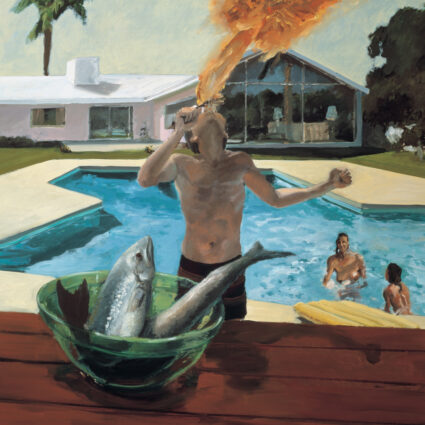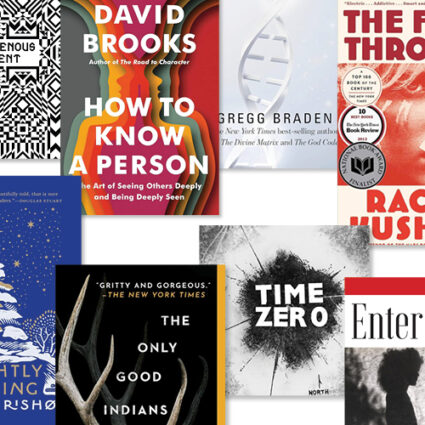In The Yucca People, writer Tyler Stallings and photographer Naida Osline contemplate the desert and land use through the lens of the Yucca plant.
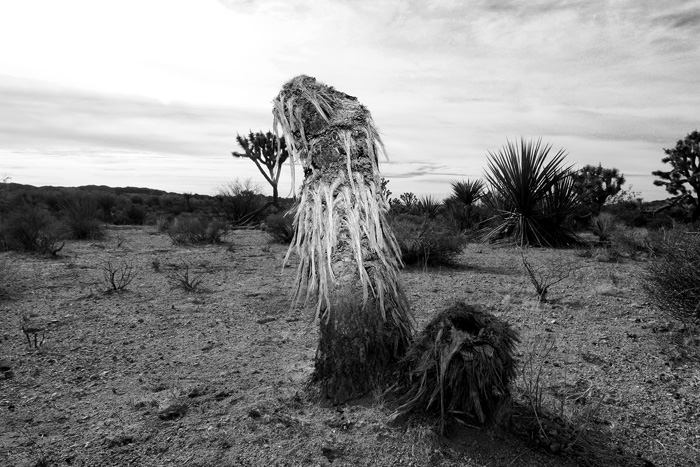
My cabin sits atop a hill in the Mojave Desert. Several miles up from the main road, it stands alone within the caldera of an extinct volcano, resting on layers of sediment accumulated over millions of years. Humans are scarce. Coyotes, jackrabbits, rattlesnakes, scorpions, Joshua trees, ancient creosote bushes, and yuccas are the dominant species.
The golden hour, with its soft, reddish light and long shadows, is my chosen time of day for morning walks. The rising sun casts rays of light at a low angle, backlighting the desert’s residents with a radiance.
In this light, I see the Yucca People come alive. When the shadows shift from long to short as the sun rises, they are on the move, their shapes transforming into elders, alien beings, ghosts, shamans, kings, queens, warriors, victims, seekers, sentinels, and migrants of the Southwest. For 40 million years, they have silently populated these arid lands: sometimes germinating, other times cloning. Some clonal rings are nearly 2,000 years old. Deserts knitted through California, Nevada, Arizona, New Mexico, and Northern Mexico are their domains.
Paiute, Mojave, and Chemehuevi people split apart the yucca’s leaves for many uses. They would weave the fibers into cordage, crafting sandals so that they could walk among the yuccas, perhaps as companions. I wear canvas, cleated shoes to walk alongside them.
Whether real or lore, such creatures walk among us as reminders that we are active custodians rather than bystanders on the land. Such bi-pedal fantasies could also be an externalization of our monstrous temperaments towards other souls outside of our human ones. One such manifestation, Yucca Man, traverses the Mojave Desert as a guardian-reminder, sharing a kinship with brother Sasquatch in the thick Northwest forests. Sightings have been reported in Joshua Tree National Park and around the Marine Corps Air Ground Combat Center at Twentynine Palms, not too far from the park. They’re fitting locations for encounters with Yucca Man, bringing attention to land use that treats the desert as a blank slate to be written upon by Human People.
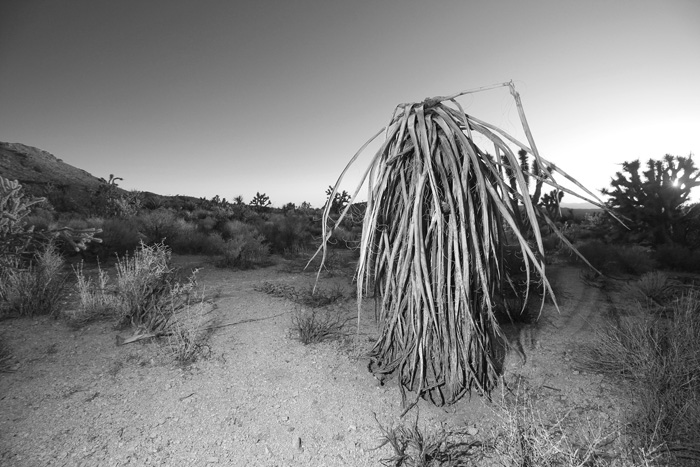
With their human scale, their trunks arching slightly forward, the drama of two seemingly fighting or playing, the yuccas appear like chronicles in the landscape to be interpreted. Their tales may bear witness to the exploits of recent Human People to fortify their built environments: the pulling of silver, gold, and copper out of the depths of the land; the controlling of rivers; the crisscrossing of deserts with motorized mobility; and, most recently, the harnessing of wind and sun by colossal windmills and expansive solar farms throughout this ancient volcanic crater and dry lake beds.
At night, I can see the glow of Las Vegas on the other side of the mountains. It’s like a visual approximation of remnant radiation from nearby Yucca Flat, an area blasted by nuclear explosions hundreds of times, now one of the most irradiated zones on Earth. Does a shared name with the area hint at the effects of the blasts on the yuccas?
Like gladiators, yuccas have evolved to protect themselves. Their bayonet-like leaves spiral around—crowns denoting their royal nature, tentacles reaching forward, touching one another tenderly with just their points. When the leaves wither to dry brittleness, they appear like tattered clothes hanging from the trunk. Or a strange, feathered, armored creature, mimicking the chitinous scales and keratinous feathers of desert creatures who are prey.
I lose my bearings quickly when I walk off-trail. The cabin on the hill, a desert watchtower in the distance, is my only point of orientation. It’s during this moment, as the night shifts into day, that I drink in the rising sun with the yuccas. As the golden hour wanes—the sun rising higher, the shadows becoming shorter, the temperature shifting quickly from icebox chill to oven-like heat—I feel the yucca’s open invitation for me to surrender to their stretch of time.
Together, we experience the rhythms of moisture and evaporation, of mountains rising and eroding, civilizations appearing and disappearing, of the cyclic vying between ancestral and latter-day practices for living and dying. Suddenly, I have the urge to create a ritual that unites me further. I clasp the dagger leaf of a favorite, then with a quick prick of its needle point, I release a drop of blood.
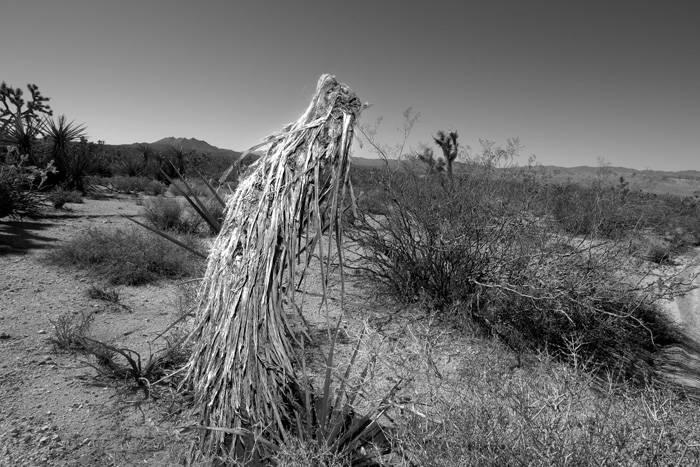
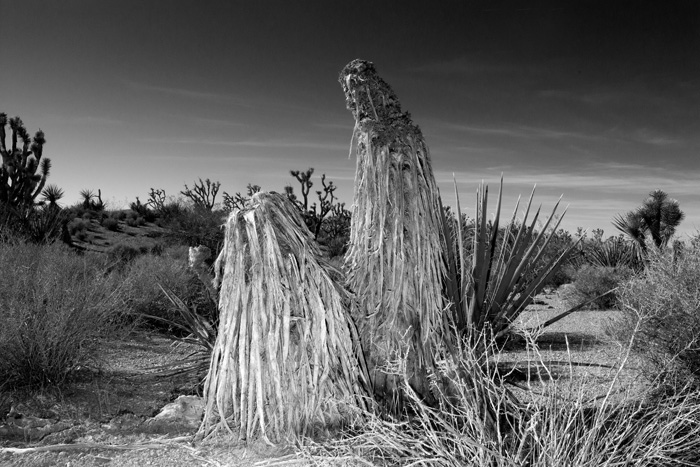
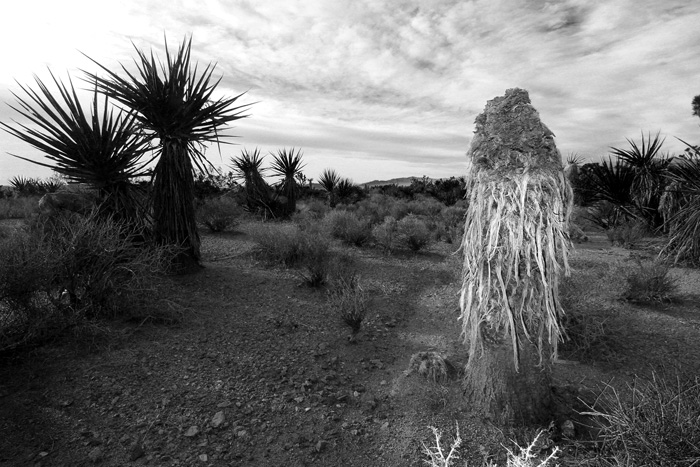
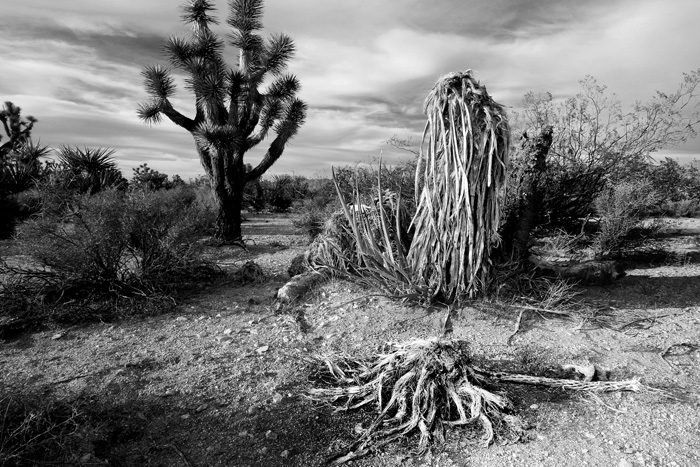
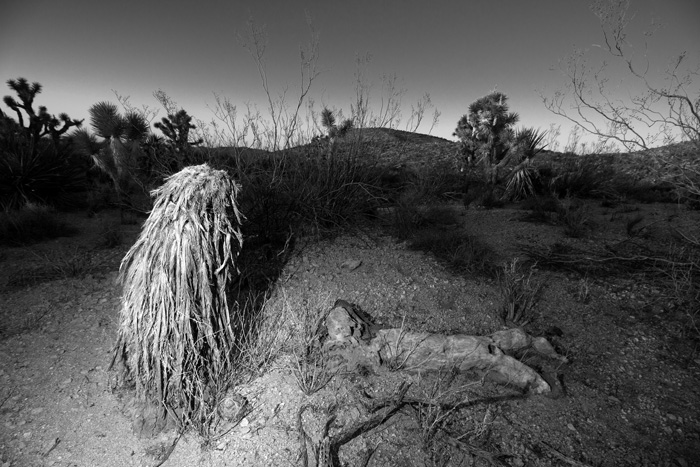
Naida Osline and Tyler Stallings are collaborators on The Yucca People. Osline is a photographer and filmmaker who blends conceptual and documentary practices. Stallings is a writer, filmmaker, and curator who has explored the poetics of Southwest deserts in several projects. Osline and Stallings are based in Southern California.

